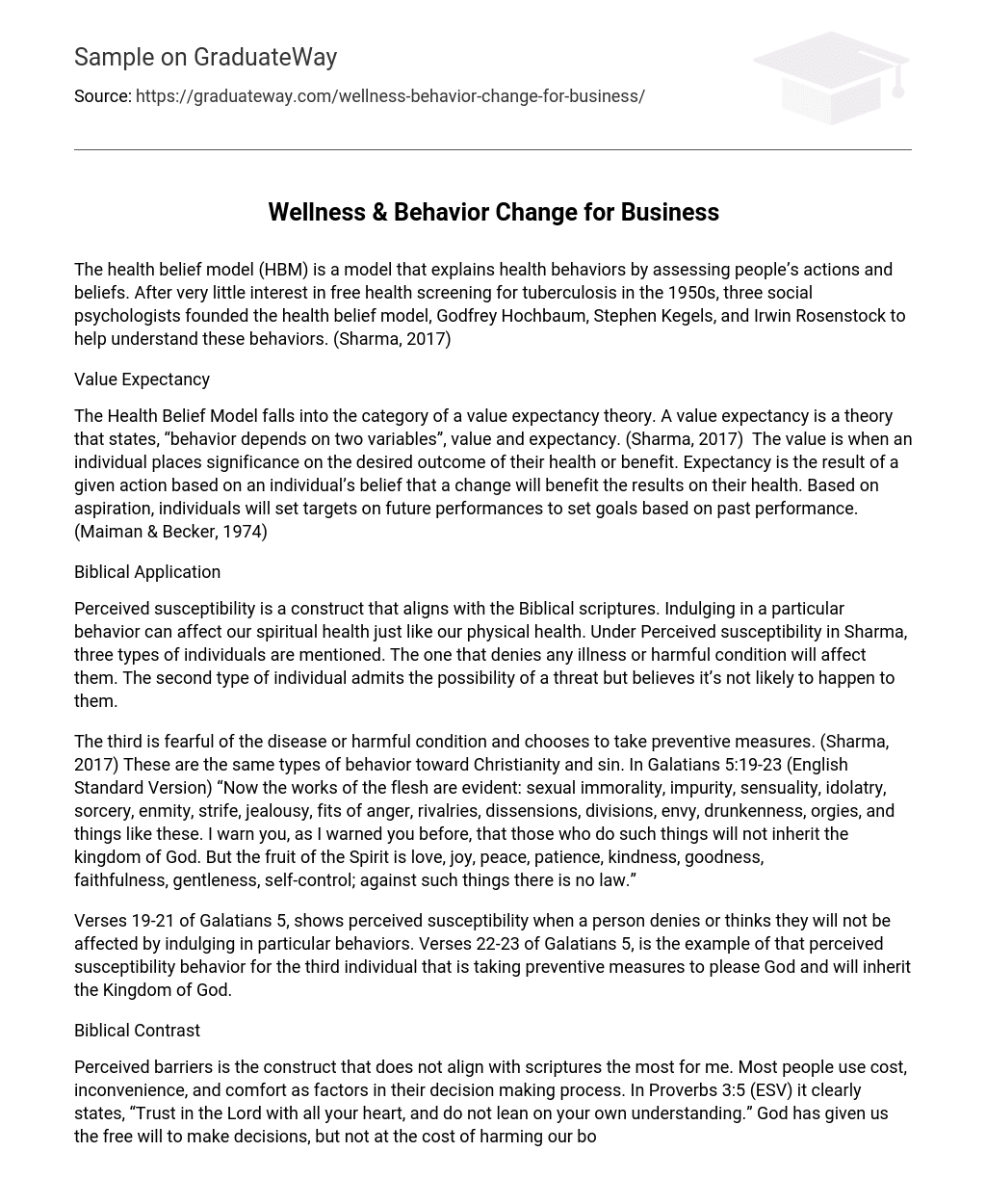The health belief model (HBM) is a model that explains health behaviors by assessing people’s actions and beliefs. After very little interest in free health screening for tuberculosis in the 1950s, three social psychologists founded the health belief model, Godfrey Hochbaum, Stephen Kegels, and Irwin Rosenstock to help understand these behaviors. (Sharma, 2017)
Value Expectancy
The Health Belief Model falls into the category of a value expectancy theory. A value expectancy is a theory that states, “behavior depends on two variables”, value and expectancy. (Sharma, 2017) The value is when an individual places significance on the desired outcome of their health or benefit. Expectancy is the result of a given action based on an individual’s belief that a change will benefit the results on their health. Based on aspiration, individuals will set targets on future performances to set goals based on past performance. (Maiman & Becker, 1974)
Biblical Application
Perceived susceptibility is a construct that aligns with the Biblical scriptures. Indulging in a particular behavior can affect our spiritual health just like our physical health. Under Perceived susceptibility in Sharma, three types of individuals are mentioned. The one that denies any illness or harmful condition will affect them. The second type of individual admits the possibility of a threat but believes it’s not likely to happen to them.
The third is fearful of the disease or harmful condition and chooses to take preventive measures. (Sharma, 2017) These are the same types of behavior toward Christianity and sin. In Galatians 5:19-23 (English Standard Version) “Now the works of the flesh are evident: sexual immorality, impurity, sensuality, idolatry, sorcery, enmity, strife, jealousy, fits of anger, rivalries, dissensions, divisions, envy, drunkenness, orgies, and things like these. I warn you, as I warned you before, that those who do such things will not inherit the kingdom of God. But the fruit of the Spirit is love, joy, peace, patience, kindness, goodness, faithfulness, gentleness, self-control; against such things there is no law.”
Verses 19-21 of Galatians 5, shows perceived susceptibility when a person denies or thinks they will not be affected by indulging in particular behaviors. Verses 22-23 of Galatians 5, is the example of that perceived susceptibility behavior for the third individual that is taking preventive measures to please God and will inherit the Kingdom of God.
Biblical Contrast
Perceived barriers is the construct that does not align with scriptures the most for me. Most people use cost, inconvenience, and comfort as factors in their decision making process. In Proverbs 3:5 (ESV) it clearly states, “Trust in the Lord with all your heart, and do not lean on your own understanding.” God has given us the free will to make decisions, but not at the cost of harming our bodies. Scripture tells us, “do you not know that your body is a temple of the Holy Spirit within you, whom you have from God? You are not your own, for you were bought with a price. So glorify God in your body.” (1 Corinthians 6:19-20, ESV) We shouldn’t let money or inconvenience steer our decisions when it comes to health.
References
- Maiman, L.A., & Becker, M.H. (1974). The health belief model: Origins and correlates in psychological theory. In M.H. Becker (Ed.), The health belief model and personal health behavior (pp. 9-26). Thorofare, NJ: Charles B. Slack.
- Sharma, M. (2017). Theoretical Foundations of Health Education and Health Promotion. Burlington, MA: Jones & Bartlett Learning.





